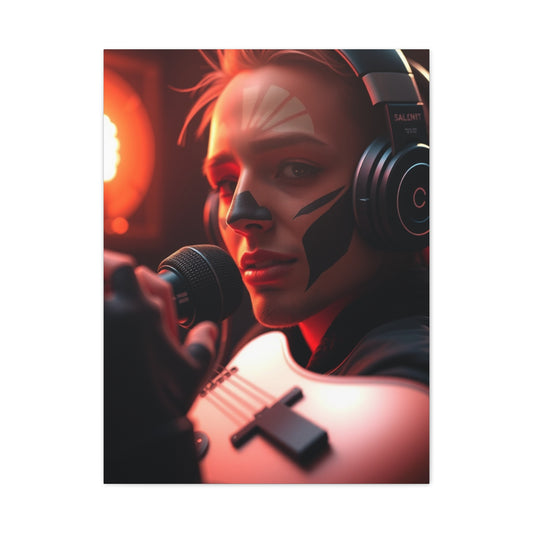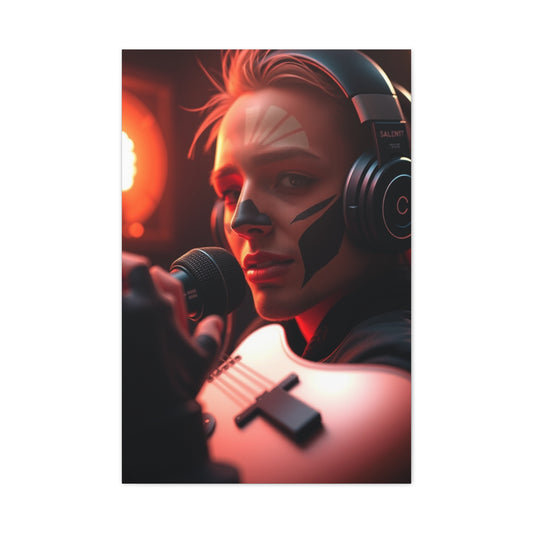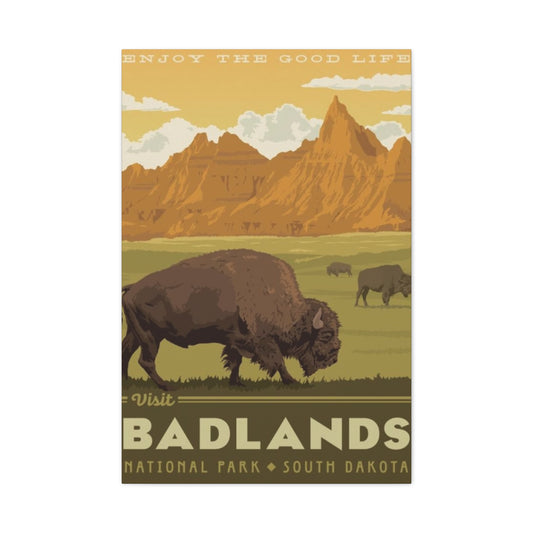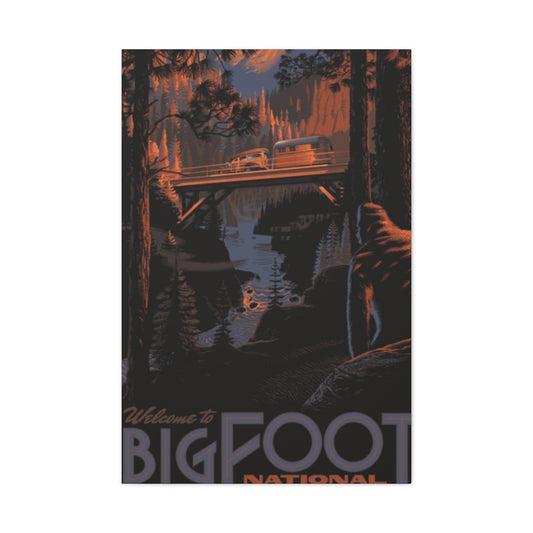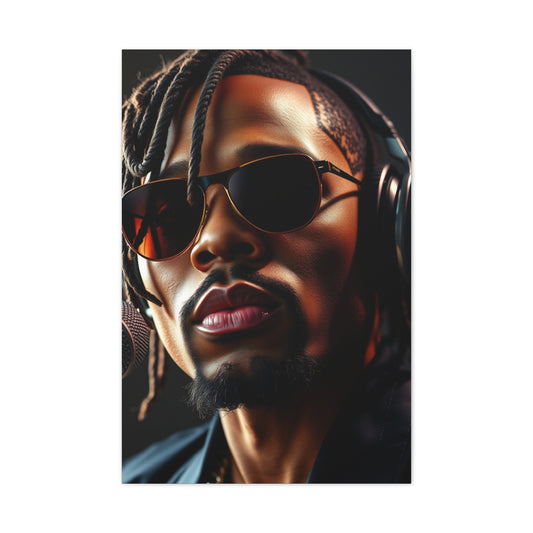The Art of Seeing: Drawing as a Gateway to Expression
Drawing is far more than a technical exercise's an act of mindful observation, a gateway to understanding the world through a deeply personal lens. It allows us to slow down, absorb, and connect to what we see in a way that no other medium quite replicates. In the rush of modern creativity, where immediacy often reigns supreme, drawing remains a slow and deliberate form of art, rich with introspection and layered meaning.
In my artistic journey, whether I’m working with the fluidity of watercolours, the tactile richness of oil paint, or the bold contrast of linocut printmaking, I find myself continually returning to drawing. It’s not a mere preliminary sketch or a background taskit’s the soul of my creative process. Drawing provides the foundational structure for every other medium I engage with. It's the silent architecture behind visual expression, guiding my hand, grounding my ideas, and shaping the way I perceive form, space, and texture.
Drawing demands presence. It’s a meditative act, one that anchors me to the here and now. Unlike photography, which captures a moment in a blink, drawing invites a deeper intimacy with the subject. It trains the eye to truly see, not just glance. The act becomes a quiet dialogue between observation and imagination, the tangible and the abstract. In this space, I can investigate contours, chase shadows, and explore the rhythm of a subject’s essence.
But drawing is also about surrender. Some of my most meaningful work has come not from control but from letting gofrom allowing mistakes to happen, from embracing the irregularities. The imperfect lines, the tentative strokes, and the accidental marks often carry a kind of raw honesty that polished perfection never could. These moments reveal something more truthful, more resonant. They embody a willingness to risk, to experiment, and to discover. And it is within these spontaneous, often vulnerable, gestures that new ideas and authentic styles are born.
A New Chapter: Shifting from Graphite to Colour
For years, my tool of choice was a reliable 3B graphite pencilversatile, forgiving, and capable of a wide tonal range. It served me well, offering the subtlety of shading and the precision of line I needed to render complex scenes and delicate forms. Graphite’s grey scale was expressive in its own right, echoing the moods of introspection and quiet observation.
However, over time, I began to feel the limitations of monochrome. While grey holds its poetry, it began to feel constraining, as if I were whispering when I wanted to sing. I longed to add a chromatic dimension to my drawingssomething that could speak not just in line and form, but also in hue, saturation, and temperature. The emotional language of colour beckoned, and I knew I needed to expand my visual vocabulary.
At the end of 2019, I made a pivotal decision. I transitioned from graphite to Faber-Castell Pitt artist pensvivid, richly pigmented tools filled with permanent India ink. This shift marked a transformative moment in my creative practice. These pens are not for the timid. They don’t allow the safety of erasure, nor do they indulge second thoughts. Every mark made with a Pitt pen is a commitment, a declaration of intent. They demand confidence and presence in each gesture, turning the act of drawing into a performance of sorts expressive dance between control and freedom.
What struck me first was the vibrancy. Colour introduced a new emotional register to my work. It allowed me to explore temperature and tone, contrast and harmony, light and atmosphere with new energy. Suddenly, I wasn’t just drawing a formI was evoking a mood, a story, a sense of time and place.
Yet the greatest gift these pens offered me was not just their color, was their finality. The inability to erase meant I had to trust myself more. It taught me to be deliberate yet intuitive, to embrace the unexpected. Mistakes became features, and spontaneity became a powerful asset. This acceptance of imperfection reminded me that artistic expression isn’t about control; it’s about communication. It’s about truthfulness, not polish.
Drawing with Colour: Embracing the Language of Ink
Working with Faber-Castell Pitt artist pens has fundamentally reshaped the way I approach both drawing and colour. Each pen is loaded with highly pigmented India ink, known for its durability and saturation. The ink flows smoothly, but without mercyonce it's down, it's down for good. That permanence is a creative crucible. It forces a kind of expressive honesty that no graphite pencil ever required of me.
The tactile feedback of these pens is unique. They glide with confidence but push back just enough to make every stroke feel intentional. They invite experimentation while reinforcing discipline. I began to appreciate not only what colour could express, but also how the medium itself could shape the rhythm and flow of my mark-making. The variety of nibsfrom fine tips to brush-like strokesopened up new possibilities for texture, movement, and layering.
Colour introduced another profound shift: emotional immediacy. Where graphite offered nuance and restraint, colour screamed and whispered and sang. A cool ultramarine could convey solitude, while a burst of ochre might suggest warmth and memory. These pens became tools not just for observation, but for emotion and narrative.
More than once, I found myself making marks that defied logic but made perfect sense visuallylines that shouldn’t have worked but somehow did. This intuitive use of colour led me to reinterpret subjects with greater abstraction, focusing more on essence than realism. In many ways, I began to draw how something felt, rather than just how it looked.
This instinctual approach allowed me to reconnect with a sense of play. Too often, as artists, we fall into the trap of overthinking. We strive for technical prowess at the expense of expression. Working with Pitt pens pulled me out of that mindset. They encouraged me to be bold, to embrace risk, and to trust the creative process.
As I continued exploring this medium, I began to integrate the pens into other stages of my work. They became part of my sketchbook studies, compositional planning, and even final pieces. The permanence of the ink encouraged me to approach drawing not as a rehearsal, but as a performance worth preserving. Each mark was a gesture toward something honest and complete.
These drawings, once confined to preparatory roles, began to stand on their own. They became finished artworks in their own right, with the vividness of colour and immediacy of line offering something raw and compelling. Viewers responded to them differently too. There was a sense of vitality in the work that had not been present beforeperhaps because the process itself had become more alive, more charged with risk and reward.
In actual, the journey from graphite to colour has been about more than switching toolsit has been about shifting perspective. It has been about learning to see in a new way, to embrace unpredictability, and to celebrate the expressive power of imperfection. The Faber-Castell Pitt pens have become not just a medium, but a philosophy: one rooted in presence, courage, and joy.
Embracing Ink: A Journey Beyond Erasure
Transitioning from the mutable softness of charcoal to the unforgiving permanence of Pitt Pens felt like stepping into a different artistic dimension. The immediacy was startling. With charcoal, every mark can be smudged, softened, or erased, a suggestion, not a commitment. But ink commands decisiveness. It doesn’t ask for your confidence; it demands it.
Initially, this stark contrast left me tentative. My hand hovered above the page longer than usual. I missed the freedom of error, the luxury of time to consider and reconsider. But slowly, something shifted. The permanence of the ink became not a burden but a challenge, then, unexpectedly, a liberation. Each stroke, immutable and bold, forced me into a new rhythm of creation. There was no retreat, only forward motion. And with that came an unforeseen clarity.
The Pitt Pen, with its fluid consistency and robust line quality, began to reshape how I approached image-making. Where once I would agonize over the structure and silhouette of a form, I now move with urgency and intent. There was less fear of getting it wrong and more curiosity about what might unfold. The ink was no longer a final word; it became a conversation, a collaboration between my hand and the page.
That immediacy translated into a certain kinetic energy. My drawings started to breathe in a way they hadn’t before. They were no longer about perfection or polish, but about capturing a fleeting mood, a moment of light, a trace of wind in the grass. Each image pulsed with spontaneity, infused with the same elemental energy that defines the rural landscapes I return to again and again in my work. That shift in approach led to a deeper connection with my subject matterone that prioritized instinct over strategy, emotion over precision.
Relearning Colour in the Landscape
As my confidence with the medium grew, so too did my curiosity about its color potential. I deliberately chose the Landscape and Terra sets of Pitt Pens, knowing they offered a tonal spectrum reflective of the environments that inspire me most: the windswept hills and dales of northern England. These regions are defined not just by form but by subtle shifts in colormuted greens, warm ochres, and dusky earth tones.
The Landscape set offered immediate familiarity. Olive greens and warm browns aligned well with the fields, hedgerows, and ancient paths that fill my sketchbooks. However, not every color harmonized effortlessly. India Red, for instance, though vibrant, introduced a hue that felt too foreign for the moody, weather-worn terrain I was trying to render. It was beautiful, certainly, but it lacked relevance in my visual vocabulary.
Similarly, in the Terra set, tones like Terracotta and Caput Mortuum presented themselves with quiet strength, yet I often bypassed them in the moment. They became like silent observers in the palette present, full of potential, but underutilized in the haste of outdoor sketching. The lesson here was subtle but important: color needs context. A shade can be exquisite on its own, but it falls flat when it doesn’t resonate with the emotional and geographical temperature of the scene.
What became increasingly clear was the absence of a vital mid-tone blue. In the cool shadows of stone walls, in the hazy skies that precede summer storms, in the reflective gleam of distant rivers, there was a chromatic void I couldn’t fill with my existing pens. Something akin to Ultramarine-rich, balanced blue was missing. I found myself reaching instinctively for a hue that wasn’t there. That gap became a catalyst, sparking ideas for how I might expand my set and customize it to better echo the nuances of the places I loved to depict.
That blue void served as a creative irritant, one that pushed me to experiment. I started layering colors in ways I hadn’t beforemixing cooler greys with muted purples or blending diluted sepias to approximate shadowed cobalt. And when even that wasn’t enough, I began reintegrating graphiteno t as a fallback, but as a deliberate aesthetic choice. Where ink laid down precision, graphite introduced softness. Together, they created a dynamic tension: ink for the assertive line, graphite for the whispered edge.
The Alchemy of Ink and Graphite
What emerged from this evolving practice was a hybrid language that leaned into contrast, embraced imperfection, and danced between boldness and subtlety. The juxtaposition of Pitt Pen ink with the smoky gradations of graphite allowed me to introduce tonal depth without sacrificing immediacy. This combination was not about compromise but about synthesis: each medium brought qualities the other lacked.
Graphite added a grounding presence. In areas where the ink felt too raw or stark, a gentle sweep of graphite could usher in softness and shadow, making the composition feel more dimensional and less didactic. In turn, ink reasserted form where graphite alone might dissolve into ambiguity. The interplay between these materials mimicked the very landscapes I was trying to depictplaces where clarity and mystery coexist, where light and weather shift constantly, and where no two views are ever the same.
There’s a deeper philosophical resonance in that hybridity. Working with both media invited a new kind of attentionone rooted in responsiveness rather than control. It wasn’t just about drawing; it was about listening. Listening to what the image needed. Listening to the interplay of material and mark. Listening, even, to the landscape itself and its quiet insistence on being seen fully, honestly, and without pretense.
This approach has permanently altered how I think about making art. No longer do I see the page as a battleground for perfection. It is now a space of inquiry, risk, and discovery. The permanence of ink is not a threat but an invitationto commit, to trust, to respond. And the softness of graphite, far from being a crutch, offers the necessary counterbalance that keeps the work rooted in atmosphere and ambiguity.
Through this process, I’ve come to understand that tools are not just implements of techniquethey are conduits of mindset. Choosing to work with Pitt Pens and graphite was not merely a material decision. It was a philosophical one. It meant accepting uncertainty, embracing failure, and leaning into the unpredictable. It meant, above all, giving up control in favor of presence.
As I continue to explore this visual terrain, I remain acutely aware of how each choiceeach pen selected, each stroke madecarries both consequence and possibility. There is no erasing, no undoing. But that’s exactly what makes it so exhilarating. It mirrors life in its truest form: irretrievable, raw, and real.
In that spirit, I look forward to refining my palette further, searching out that elusive mid-tone blue, and deepening this ongoing dialogue between ink, graphite, and the landscapes I love. Each drawing becomes not just an image, but a lived momentetched, imperfect, and fully alive.
The Dynamic Versatility of Pitt Pens: Control, Flow, and Expression
Working with Pitt Pens reveals an artistic experience rooted in tactile sensitivity and fluid control. Unlike rigid markers or cumbersome traditional tools, each brush nib in the Pitt Pen collection operates like an extension of the handsupple, responsive, and precise. Their design allows for remarkable adaptability: a subtle shift in wrist pressure or angle can produce an entirely different visual outcome. At light pressure, the pen lays down whisper-fine lines, delicate as spider silk, perfect for intricate detailing or gentle hatching. With firmer strokes, the nib expands, laying down sweeping marks that can stretch nearly half a centimeter in width. This physical range is critical for expressive mark-making, whether sketching a figure or capturing the broad undulation of a landscape.
What sets these pens apart from traditional ink tools is the combination of control and immediacy. They embody the fluidity of dip pens but without the need for constant re-inking, messy setups, or laborious cleanup. That immediacy becomes a gateway to spontaneitycritical in fast-paced sketching or when working outdoors under shifting light conditions. Artists are not held back by logistics, and this freedom fuels experimentation and flow.
There's a kinetic quality to the marks made with Pitt Pens. The nib responds not just to pressure but to speed and motion. Quick flicks result in lines that vary in density and opacity, often tapering beautifully or breaking near the edges to suggest texture. These characteristics bring life to the artwork, line speaks of movement, of the artist’s hand in motion. In these moments, the marks carry more than visual value; they encapsulate a rhythm and energy that rigid mediums rarely convey.
One of the more intriguing aspects of using Pitt Pens is how they bridge the gap between drawing and painting. The brush tip delivers pigment in such a way that it sometimes feels more akin to a paintbrush than a pen, yet the control remains tight and deliberate. This opens new avenues for visual languagerendering expressive, layered strokes that might echo watercolor in transparency or evoke the bold directness of charcoal. There is a meditative quality to the act of drawing with these pens, where line becomes gesture and gesture becomes emotion. The tool’s ability to shift from tight technical precision to gestural freedom is a rare alchemy in the world of ink-based media.
Artists often describe entering a state of flow when the tool in their hand disappears into the background, leaving only the movement and intention behind. Pitt Pens seem engineered for this disappearance. They don’t demand attention through complexity or fussiness. Instead, they respond with a grace that amplifies the artist’s intention, making the marks feel inevitable, natural, and unforced. Whether used for elaborate illustrative compositions, spontaneous urban sketching, or quiet personal journaling, these pens adapt to the moment, reflecting the nuances of thought and touch with startling fidelity.
As tools, they are more than functionalthey are expressive partners in creation. There is something profoundly human about a medium that can translate subtle gesture into such varied visual forms. With Pitt Pens, the dialogue between hand and surface becomes more intimate, more immediate. The result is work that breathes, that vibrates with life, that tells not just what was seen, but how it was felt in the act of seeing.
Layering, Transparency, and Tonal Depth in Ink
One of the more compelling discoveries when working with Pitt Pens is their capacity for layering. Unlike opaque mediums, the ink used in these pens is semi-transparent, allowing each new layer to sit atop the previous one without fully obscuring it. This transparency unlocks a whole new dimension of tonal play. With each overlapping stroke, the color gradually intensifies and deepens. What starts as a single shade evolves into a complex interplay of hues and valuesespecially when the strokes cross at varying angles or pressures.
Although these pens don’t allow the artist to lighten areas once ink has been applied, the transparency means you can shift tone not by removing pigment, but by modulating how much of it is present. This means shadow and depth are not added by darkening a color alone, but by building on its complexity. The surface begins to vibrate with subtlety, reflecting layers of thought and decision-making. A confident stroke laid over a softer one can bring surprising results, sometimes producing iridescent effects where the ink appears to shimmer with movement.
The act of layering becomes intuitive. With practice, you learn how to anticipate the result of one line laid over another. The ink behaves almost like watercolor in its ability to create visual depth, but with the control of a pen. In this layering process, marks begin to interactdarker tones emerge from repeated passes, while untouched areas remain luminous. This dance between density and restraint creates dynamic compositions that are rich in both color and feeling.
This method of building depth through successive layers also encourages more mindful mark-making. Rather than attempting to get everything perfect in one stroke, the process invites the artist to slow down, observe, and refine. The result is an artwork that feels alivecomposed not just of lines, but of accumulated decisions. Each layer records a moment, a deliberate choice, adding nuance and story to the image.
The Role of Texture, Surface, and Artistic Intent
The physical interaction between pen and paper forms a crucial part of the creative processone that is often underestimated until things go wrong. Not every paper surface works harmoniously with the Pitt Pen's brush nib. A lesson learned early on came during a session on Arches Hot Press watercolor paper, renowned for its ultra-smooth finish and excellent handling of wet media. Surprisingly, this surface proved incompatible with the pens. Despite its reputation, the paper's internal sizing and texture created resistance, causing the nibs to fray and degrade with unexpected speed. It was a turning point that shifted my focus to more suitable alternatives.
Since then, smooth cartridge paper and high-quality Bristol board have become the foundation of my practice. These surfaces provide a gentle welcome to the brush nib, allowing it to glide without resistance. They absorb the ink evenly, supporting the layering process without causing bleeding or feathering. The results are clean, crisp, and full of vitality. Perhaps most importantly, they preserve the integrity of the nib over timeensuring that expressive control is maintained through many hours of use.
But the surface isn't just about pen preservation also defines the final character of the artwork. On smoother papers, the lines are sleek, precise, and refined, ideal for capturing architectural elements, portraits, or controlled studies. On slightly toothier surfaces, the ink can break ever so slightly, introducing a natural variation that mimics the unpredictability of dry-brush painting. This unpredictability injects a wild, organic quality into the work, particularly when sketching natural environments. A gust of wind, a flick of the wrist, external and internal forces manifest in the drawing itself.
The choice of surface becomes an extension of artistic intent. Do I want this piece to feel grounded and contemplative, with seamless gradients and gentle tones? Or do I want to capture energy and tension through disrupted lines and raw texture? Matching the pen with the right paper allows for a more intimate connection between idea and execution. The tools don't just follow your handthey amplify your vision.
Texture, too, emerges not just from the paper but from the way the pen is handled. Fast, angled strokes often fray slightly at the edges, creating a textured line that resembles natural elements: wind in tall grass, bark on a tree, the shifting grain of earth. These irregularities, rather than flaws, serve as expressive devices. They introduce rhythm, unpredictability, and personalitydrawing the viewer into the very moment the mark was made.
Embracing Agility: How Quick-Drying Ink Transforms the Creative Flow
In the rhythm of a drawing session, timing is everything. The tools we use either hinder or enhance the momentum that fuels creative expression. One of the most remarkable aspects of working with Faber-Castell Pitt Artist Pens is their rapid drying capability. Unlike traditional markers or water-based inks that require patience and caution, these pens dry within moments, allowing for an uninterrupted and dynamic drawing process.
This quick-set feature becomes an invisible ally, especially in situations where energy and pace are vital. I find myself moving across the paper with a sense of freedomlaying down one hue after another without the fear of dragging pigment or creating unintended smears. Each mark becomes an intentional part of a greater composition, unburdened by the need to pause or wait for ink to settle.
That immediacy changes the tone of the entire creative process. There's a rhythm that emerges, almost like visual jazz, where layers build upon each other with a kind of fluid momentum. This layering isn't just physical's conceptual. Each stroke becomes a choice, a gesture full of purpose and spontaneity. The pens seem to invite a form of drawing that’s both intuitive and deliberate, making space for accidents and intention to coexist beautifully.
With traditional materials, it’s easy to fall into caution, holding back until you're sure of the next move. But these pens encourage risk, speed, and experimentation. They’re not just a mediumthey’re a collaborator. They shape how I think about time and how quickly an idea can be captured in color and form. This acceleration has added a new layer of vitality to my sketches and early compositions, giving me the confidence to chase an idea wherever it leads.
The very act of creating with tools that dry on contact liberates more than just the surface of the paper, freeing the artist internally as well. When you're not burdened by the logistics of drying time, the focus shifts entirely to the act of expression. It's a subtle psychological shift, but a powerful one. The pen becomes a natural extension of thought, turning the blank page into a space for immediate conversation between intention and execution. There's no lag between impulse and result. This synchrony between thought and action enables a more genuine kind of expression, where the imperfections are part of the dialogue, not errors to be corrected.
What stands out most is how this swiftness fosters a kind of intimacy with the creative moment. You begin to trust the process more, relying not on overplanning but on a heightened awareness of movement and mark-making. There's a certain honesty in that. The artwork becomes a direct reflection of the moment in which it was madealive with energy, decision, and vulnerability. That’s where real creativity livesnot in perfection, but in momentum, in the brave act of making before the moment passes.
Quick-drying ink doesn’t just transform efficiency transforms mindset. It speaks to a kind of creative agility that resonates far beyond the page. It invites spontaneity, yes, but also builds a quiet discipline, one that rewards presence over perfectionism. With each rapid-drying mark, the artist learns to move forward rather than linger, to embrace evolution rather than erasure. This dynamic tension between speed and control, between flow and form, becomes a profound teacher in the art of letting go.
It’s in those rapid transitions, those split-second decisions where intuition takes over, that some of the most interesting creative breakthroughs occur. The speed forces clarity. You don't have time to second-guess. And in that space, something raw and authentic emergessomething you may not have reached if you’d had more time to think or hesitate. Quick-drying ink facilitates not just the act of drawing, but a deeper communion with your instincts.
This seemingly technical feature, fast drying, ultimately reshapes the emotional landscape of creativity. The confidence it fosters isn't just about preventing smudges. It's about a new sense of flow, one where ideas are honored as they appear, not shelved for later refinement. The ink, the hand, and the mind align in a kind of creative sprint, where the finish line is constantly shifting but always inspiring pursuit. It’s a way of working that values immediacy, responsiveness, and the kind of engagement that only comes when you’re fully in the moment. And for artists seeking to rediscover the joy and pace of pure creation, that might be the most transformative gift of all.
From Sketch to Print: Elevating the Design Process Through Transparency
Beyond their role in daily drawing, Pitt Pens have evolved into something far more instrumental in my studio practice. They have shifted from being a secondary sketching tool to becoming an integral part of my printmaking workflowparticularly in preparing for multi-block linocut printing. This transformation stems largely from the semi-transparency of the ink, which mimics the layering effect found in traditional print processes.
When planning a multi-layered print, understanding how one color will interact with another is crucial. Pencil sketches, though useful, often lack the vibrancy and nuance needed to visualize this interaction fully. Pitt Pens, by contrast, offer a luminous clarity. The transparent nature of their pigment allows me to overlay colors and see how tones blend and shift, simulating the layering of ink that happens on the press. This preview, of sorts, helps inform critical decisions in the carving and inking stages of printmaking.
Their precision and range of nibs also allow for detailed mark-making, which is especially beneficial when refining the composition before committing to the carving block. The fine tips replicate the controlled lines necessary for registration and alignment, while the brush tips lend themselves to expressive flourishes that mirror the energy I want to preserve in the final print.
Using Pitt Pens in this context has reshaped my approach to planning. My preparatory drawings are no longer just placeholdersthey are illuminated blueprints that carry the vibrancy of the finished print. They serve as more than a roadmap; they become a part of the conversation between idea and execution. This crossover between drawing and printmaking brings a new level of intentionality to both disciplines, enhancing the overall cohesion of the work.
As I continue to explore this integration, I’m intrigued by how much of the mood and tone can be established long before the first block is cut. The pens offer a way to experiment with atmosphereplaying with light and layering to create emotional weight. What was once a flat schematic drawing is now a space of active discovery, where color and form begin to sing even before ink touches paper in the printmaking process.
Towards Atmosphere: Expanding the Emotional Range of Colour
The journey with Pitt Pens has so far centered around energy, gesture, and immediacy. Their vibrant hues and fast-drying properties have invited spontaneity, helping me develop a more fluid and responsive drawing style. But as I spend more time with them, I find myself drawn to the quieter potentials within their palette. I want to see how these same tools can craft depth, mood, and even a sense of time.
There’s a shift taking place in my workan evolution from speed to sensitivity. I’m beginning to push the pens beyond their obvious strengths and test their capacity to build atmosphere. This involves more nuanced layering, subtler transitions, and a deeper awareness of how transparency can imply space, shadow, and memory. These explorations have become less about capturing a quick impression and more about shaping an emotional landscape.
The limited but carefully curated spectrum of Pitt Pens forces a kind of creative constraint. I’ve learned to blend, overlay, and even obscure certain areas to suggest new hues or tones. Sometimes, a single color laid over another creates a tension or harmony that wasn’t immediately apparentoffering a quiet thrill that only becomes visible through patient, layered work.
Even the fragility of the pens themselves way the nibs can wear down with misuse, or how the caps must be carefully securedreminds me of the delicate balance between control and surrender in the creative process. These tools demand respect, but they also reward curiosity. They invite you to rethink what’s possible with a felt tip and a little imagination.
Though there are moments when I wish for an even wider range of colors or more muted tones, those limitations push me to innovate. I’ve started developing my methods for extending the palette layering opposites to dull a tone or scribbling lightly to introduce texture and variation. Each workaround becomes a discovery, reinforcing the idea that constraint often leads to innovation.
More than anything, these pens have changed how I think about drawing itself. What once felt like a preparatory step has become a rich and expressive part of my practice. The act of drawing no longer sits in the shadow of printmaking;g, it now stands beside it, informing it, enriching it, and even challenging it. There is a dialogue between the two, and at the heart of that conversation is colorvibrant, transparent, and alive.
Looking forward, I am eager to continue exploring how these pens can navigate tone, space, and storytelling. I want to see what happens when the quick gesture meets the long gazewhen speed is tempered by subtlety, and when color speaks in hushed, layered tones. With each drawing, I’m reminded that expression isn’t just about what’s seen, but about what’s felt.
The pens have not only redefined my processthey have reawakened my curiosity. With each mark, I’m pulled deeper into the act of observation, into the quiet revelations that come when color meets intention. Drawing, once a utilitarian task, now pulses with life and purpose. It sings not loudly, but with clarity and conviction. And the song it sings is full of layers, of momentum, of light.












